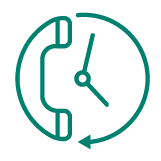How to borrow wisely and stay on top of debt
Debt is not necessarily a bad thing. It can help you improve your credit score, achieve your goals in life, and even grow your money. The key is to manage your debt so it doesn't get out of control.
Borrowing money is part of most of our lives and being in debt is not necessarily a bad thing. Lots of us are. According to Equifax Canada, average consumer debt reached $72,950 by the end of 2019. Of that, average non-mortgage debt is $23,800.
"Good debt" vs "bad debt"
Believe it or not, some debt is considered "good debt." The first step to ensuring you’re borrowing sensibly is to understand the difference between that and "bad debt."
Good debt is lower-interest borrowing, such as a student loan and a mortgage. It involves borrowing to financing something that can benefit you financially in future. "Bad debt" is higher-interest borrowing, such as payday loans. You can also think of bad debt as debt arising from purchases you don't really need, or that don't benefit you in the long-term.
"By taking control of your finances, including your debt, you can feel better about your situation and improve your quality of life."
Why borrow smarter?
Keeping on top of your debt situation and following good borrowing habits can pay off in a few ways.
Reduced stress
Worrying about where you’re going to get the money to make your monthly credit card or other debt repayments can get seriously stressful. By taking control of your finances, including your debt, you can feel better about your situation and improve your quality of life.
More money in your pocket
Debt can be expensive, particularly if it’s from payday loan companies that charge very high interest. Taking control of your borrowing will ultimately leave you with more money to save for the future, or to spend on the things that are important to you.
Progress toward your life goals
When your finances are in order, you can focus on working toward things you care about. This could include moving to a bigger place, paying for a wedding, or going on that dream vacation. Putting less of your money toward debt repayments and more toward your savings also lets you build an emergency fund to get you through any tough times.
5 good borrowing habits and why they’re important
Here’s a quick guide on how to borrow money wisely and avoid getting in over your head.
1. Only borrow what you can afford
This can be easier said than done. In general, no more than 40% of your monthly income should go toward mortgage loan payments and other debt obligations. When it starts creeping higher, that's the time to review your spending and financial plan.
2. Understand your financial situation before you borrow
Work out your monthly income and expenses, including all your bills and any debt you’re paying. Make sure your income will cover the new debt you’re taking on for the lifetime of the loan, and don’t forget that 40% rule.
3. Borrow to help you achieve your goals
Try to avoid borrowing money for things that don’t provide long-term financial value. These can include meals out, vacations, designer clothing, and impulse buys online. It's OK to splurge now and then if your spending budget allows, but if you do use a credit card, make sure you pay it off as fast as you can. Instead, borrow money for things that can help you achieve your financial goals, such as getting on the property ladder or funding education and training that can help you earn more money in future. An RSP Loan is an example of this, as it involves borrowing to max out your retirement savings plan contributions.
4. Make your payments on time
Your credit score reflects how good a borrower you are over time. Financial institutions will look at it before lending you money. The key to a good credit score is making monthly repayments (including credit cards, loans, and mortgages) on time. You can get a copy of your credit score from Equifax or TransUnion.
5. Give yourself some wiggle room
Nobody can predict what the future might hold. A line of credit is a pre-set borrowing limit that can be used at any time. It’s great for covering unexpected expenses. A line of credit can be either good or bad debt depending how you use it. Remember, it’s still debt that accrues interest and must be paid back, so all the above good habits apply.
3 tips to take control of your debt
If you feel that you have too much debt, or you just want to get better at managing your existing debt, here are a few things you can do.
1. Make a budget
This one’s been mentioned above, but it’s worth stressing. Budgeting doesn’t mean denying yourself the things you love. It’s more about being fully aware of your financial situation. Only then can you take steps to improve it, including paying down debt.
2. Come up with a repayment plan
Make a list of all your debts, such as student loans, credit cards, personal loans, and your mortgage, and note the balance, the interest rate, and the minimum payment for each. Then you can choose the order in which to pay them off that makes the most financial sense. It's a good habit to pay off debts from the smallest to the largest balance and from the highest interest rate to the lowest. Make minimum payments on the rest of your debts until you’ve paid off the first one and so on down. A financial advisor can help you structure the best plan for your needs.
3. Consider debt consolidation
This is where you take out a new loan and use the borrowed money to pay off all your other debts. It can be a good option if you’re having trouble keeping track of all your various debts and payment dates. Consolidation means you only have one loan and one interest rate to focus on, and you can work with your financial institution to agree a lower overall rate of interest.
What's next?
Contact us to discuss your financial wellness, including how to manage your debt. We've got your back.
Other articles you may be interested in:








